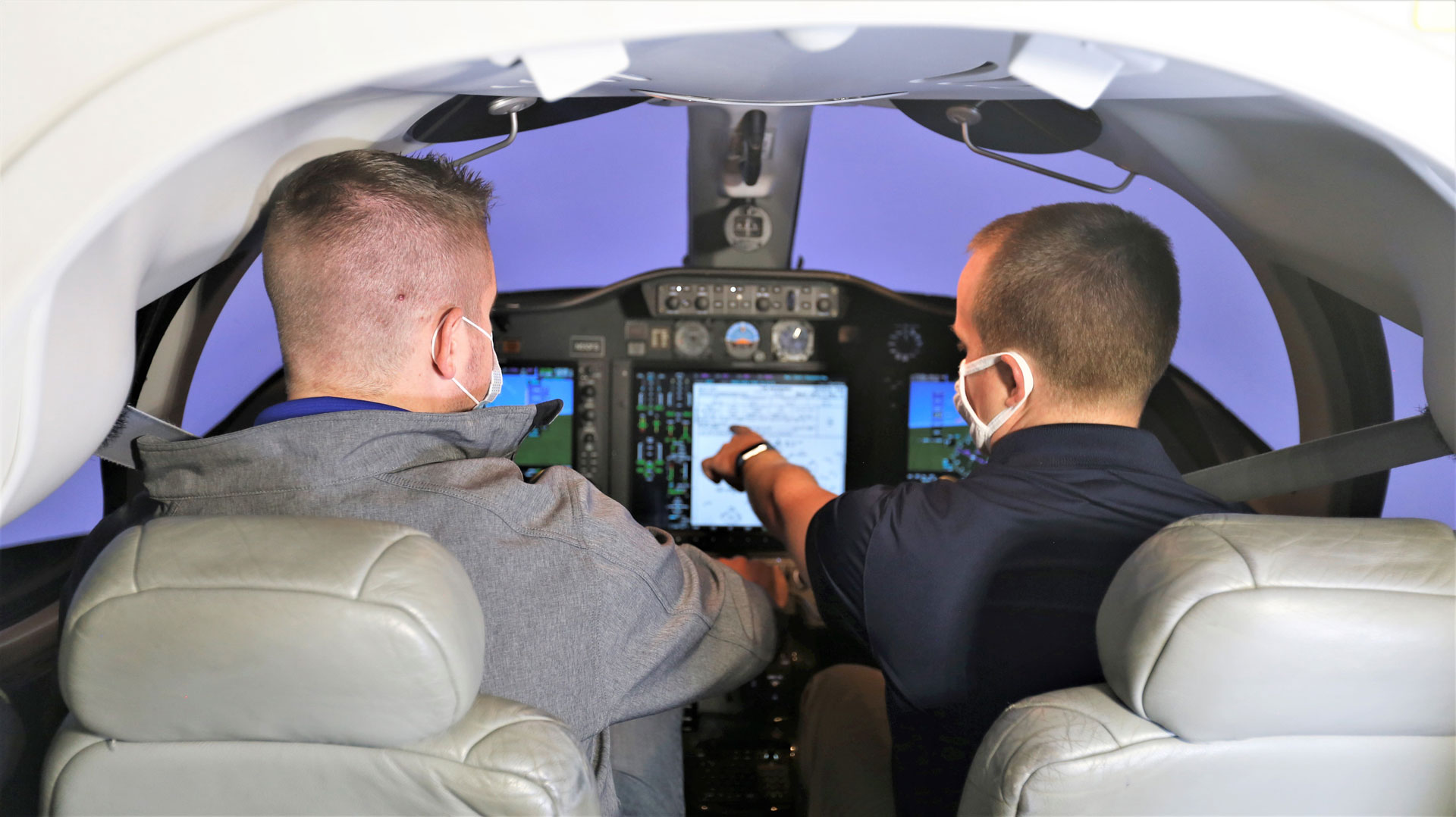Estimated reading time 9 minutes, 51 seconds.
Flight and aviation maintenance training providers have rapidly adjusted their businesses to a changed world of face masks, social-distancing, the downturn in certain sectors of air travel and a second wave of COVID-19. At the same time, training facilities are using the year 2020 to invoke change for what the future will look like for clients.
The pandemic has had, at the risk of stating the obvious, a negative impact on the business of aviation training. There’s been a reduction in people physically travelling to learning centres, due to government-mandated travel restrictions; less hours being flown; personal and corporate budget decisions, as well as other factors.
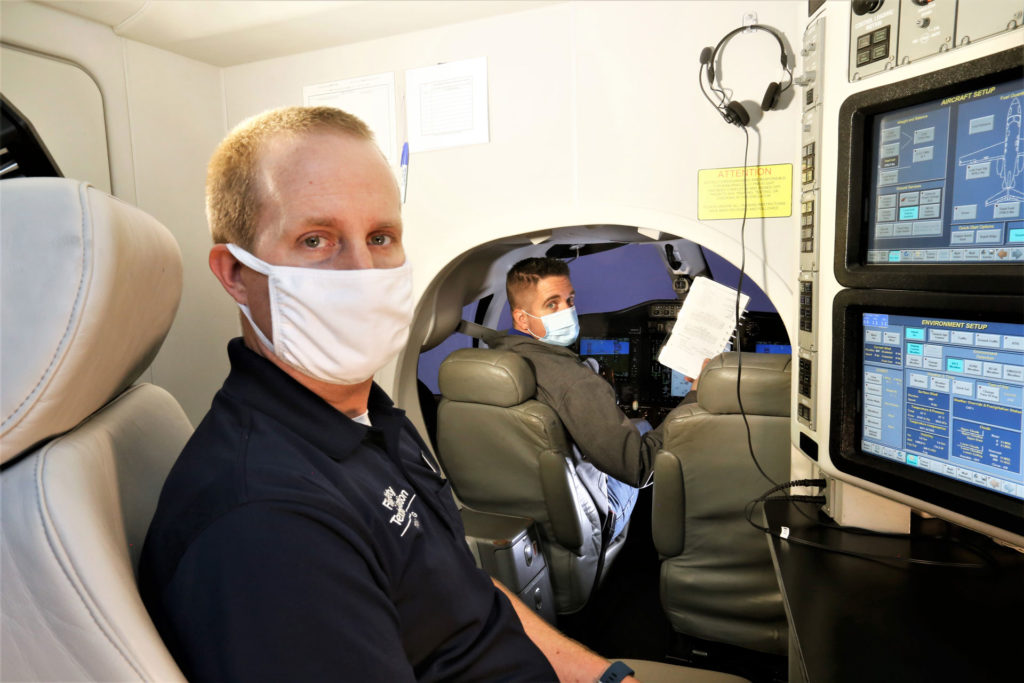
Training needs haven’t gone away, but private owner-flown and corporate travel patterns, for example, have changed. Safety in this era is a definite concern, drawing more clients into the corporate and private travel industries; there’s a built-in personnel safety advantage in bypassing busy airport terminals and limiting touch points.
Skies recently had the privilege of chatting about change in the schoolhouse with Steve Gross, FlightSafety International vice-president of sales and marketing. Gross has responsibility for FlightSafety’s worldwide business aviation and regional airline training sales activities. FlightSafety is one of world’s leading aviation training companies and a supplier of flight simulators, visual systems and displays to commercial, government and military entities. The training giant provides more than 1.4 million hours of training each year to pilots, technicians and other aviation professionals.
In early spring 2020, FlightSafety received approval from the U.S. Federal Aviation Administration (FAA) and other regulators to provide its LiveLearning online pilot ground school for recurrent training events. The online ground school was initially made available for more than 20 helicopter and fixed-wing aircraft models. FlightSafety had already begun to move its recurrent training ground-school curriculum online, using various tools to provide a live-learning approach coordinated with the FAA to ensure the appropriate credit. The FAA was happy to comply, with the proviso that students completed follow-on simulator training within three months for credit. It began initially with those few models and has since expanded to more for both fixed- and rotary-wing training. FlightSafety has carried on this success with maintenance training as well.
For FlightSafety, going online isn’t completely new. “We were already actually developing LiveLearning, instructor-lead teaching over the internet, about five years ago,” explained Gross. “We were really focused at that time on what we called enrichment courses, nice-to-know courses. We had different subject matter experts at different learning centres – ATC [air traffic control] experts, meteorologists and others.
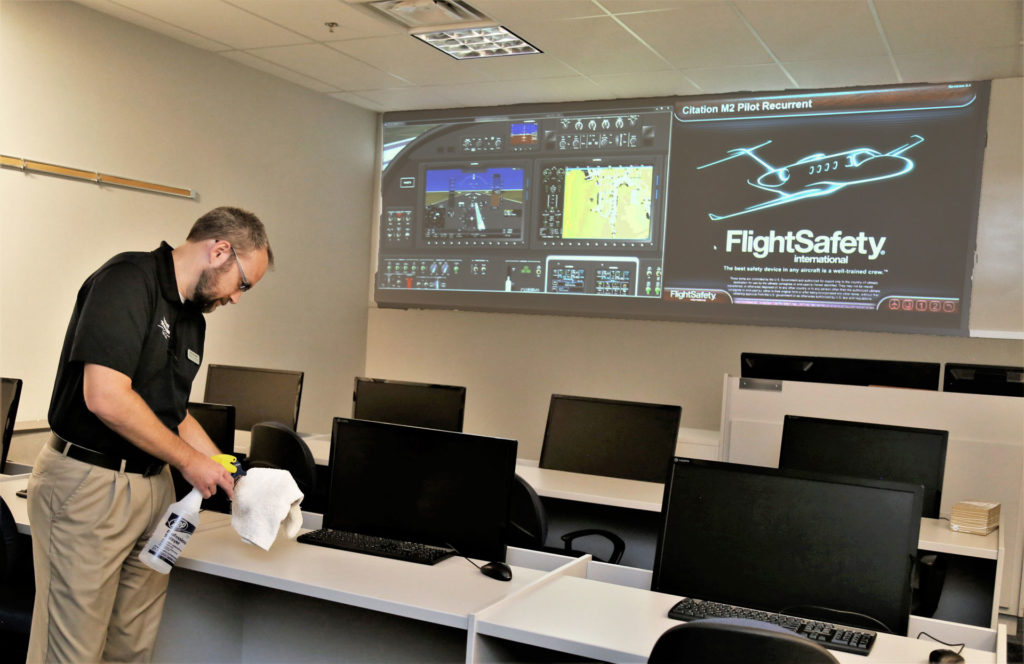
“From the maintenance side, we had experts on minimum equipment lists – who could talk to pilots about that. What we wanted to do was share that knowledge across our customer base. We utilized LiveLearning initially to be able to do that.”
The company had also already been developing an online format for recurrency training for Textron Aviation models through its joint venture with the manufacturer.
Gross took caution to point out not to use the FlightSafety buzzwords “LiveLearning” and “eLearning” interchangeably. eLearning is self-paced training from a catalog of canned, PC-based (some compatible with iPad) courses that allow one to log in at any time. On the other hand, LiveLearning is instructor-led training over the web and is accessed at a set date and time.
It’s expected that the trend of LiveLearning will continue, giving students more flexibility for training choices and enabling FlightSafety to fully serve those preferences.
Gross elaborated: “Here comes COVID. People stopped travelling. In a matter of days, (I’ve been with this company 25 years), I have never seen our company transform itself as fast as we did to produce LiveLearning ground school.
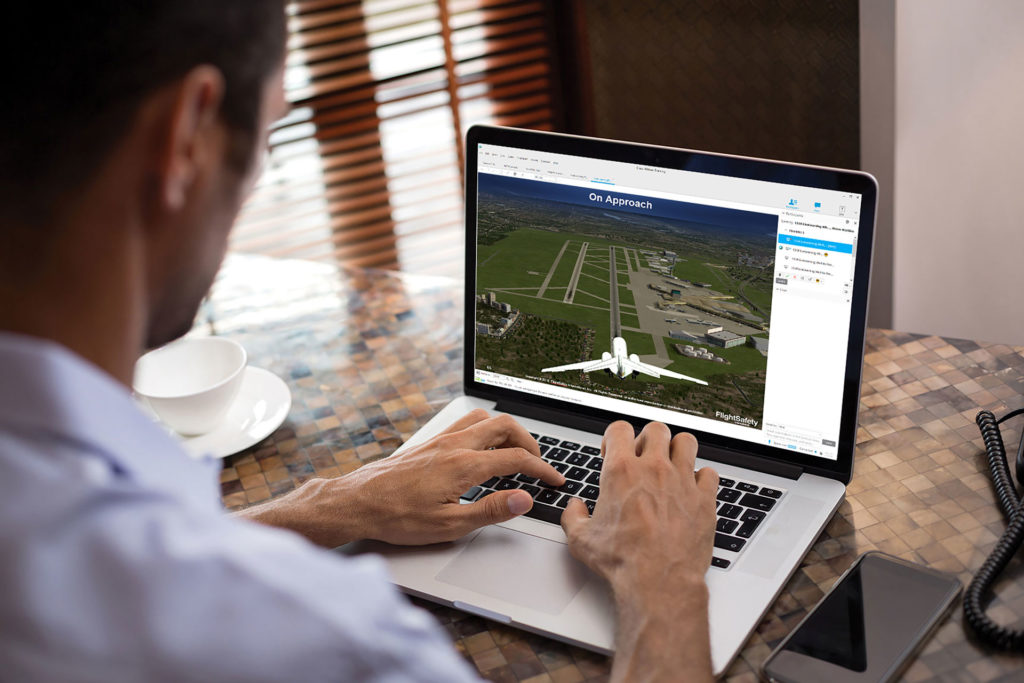
“We progressed to the point where, since March, we have delivered over 2,050 online ground school courses. The breadth is from Twin Otter to a Gulfstream G650. We’ve done over 1,400 maintenance courses through LiveLearning as well. Our biggest training partner, in terms of total number of maintenance courses delivered via LiveLearning, is Pratt & Whitney Canada, who selected us several years back as their authorized training provider.”
The training company’s second largest customer for maintenance courses delivered via LiveLearning is Honeywell, “who selected us three years ago to do their training,” added Gross. “This is such a sea change, its unbelievable. Our Paris location had added Falcon courses with EASA-specific courses, with a recurrent two-day [course]. All that is now online. We are still offering in-centre ground school, and people are still coming in for it. We can, however, cover everything up to the simulator online.”
Would FlightSafety consider retrenching back to traditional classroom-only instruction post-COVID? “We are not going to [be able to] put this genie back in the bottle,” Gross told Skies.
FlightSafety customers have asked how they can reduce their staff days away from home base, to be able to stay home with the family with that better quality of life, and only come back for the simulator training component. Having said that, pilots like to come to a brick-and-mortar classroom where they can interact with the instructor and other students, allowing them to share information and best practices in an instructor-led and -facilitated classroom. LiveLearning still allows those conversations.
Throughout the presentation, students are encouraged to engage with the courseware, the instructor and the other learners. They have the opportunity to answer polls, listen to cockpit recordings, watch videos and use other interactive features. A parallel, Skype-type discrete communications channel is enabled during these sessions for one-on-one student-instructor Q&As.

Recurrent ground school is the focus for now, as initial ground school — at two weeks in the classroom — doesn’t lend itself well to the LiveLearning experience.
Gross added, “We’re doing this [LiveLearning] for maintenance courses, too, but the students don’t get the hands-on. Employers like to keep the maintainers close in case something happens.”
Adapting to the world as we know it, FlightSafety is taking a different approach with the flight simulators in its learning centres. ClearCabin antimicrobial barrier treatment is applied every 60 days to high-touch simulator surfaces. Every high-touch area, such as push bars on doors in the company’s learning centres, have had a new technology called NanoSeptic wraps applied. NanoSeptic skins and mats use mineral nano-crystals that are activated by light to turn high-traffic public touchpoints into continuously self-cleaning surfaces.
Additionally, all surfaces are wiped down twice each day. Early in the pandemic, FlightSafety mandated the wearing of non-medical face masks at all company locations. Onsite class sizes have also been reduced to allow for physical distancing. Gross said FlightSafety has received an encouraging number of compliments from customers who believe the company has gone above and beyond to reduce the possibility of COVID transmission. Learning centre staff have been assisting customers with navigating ever-changing quarantine regulations.
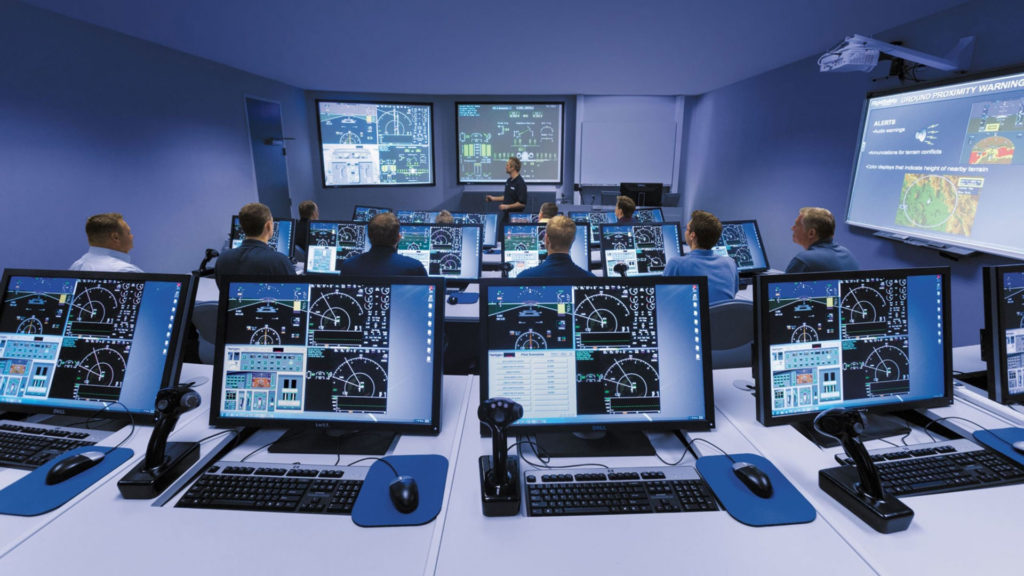
Gross shared a related story: a flight crew from Canada was concerned about taking Falcon 2000EX EASy training in the U.S., due to the local ramp-up of COVID-19 cases. With FlightSafety’s worldwide footprint, the crew was able to take the same training at the Paris Le Bourget, France, learning centre instead.
On the avionics front, a Q Series (Dash 8) simulator modified to emulate the Field Aviation/Universal Avionics EFI-890R flat panel integrated display advanced cockpit supplemental type certificate package is up and running at FlightSafety’s Toronto learning centre. Legacy Q Series and Dash 8 airline and special mission operators that are converting their fleets to the new flight deck configuration can now train on an identically-equipped simulator.
Included in that growing special mission operator group is the U.S. Army and its fleet of RO-6A-modified Q300 aircraft. FlightSafety Textron Aviation Training has set up to train for Garmin G5000-equipped Cessna Citation Excel and Citation XLS aircraft. FlightSafety also positioned a simulator for the King Air 200 aircraft equipped with Garmin G1000 NXi flight decks at its Wichita East learning centre.
It’s important to remember training organizations are essential to maintain the valuable contribution that is the economic engine of aviation. Despite the current challenges, aviation training will adapt to overcome adversity. FlightSafety’s redeployment to a LiveLearning methodology initially saw some apprehension from students. But that first impression has changed to feedback where students say they are learning more. Some of us might admit to getting a bit dozy mid-afternoon in a traditional classroom. Not now. Rather, we can walk the halls at a FlightSafety learning centre with signs on the doors reading, “LiveLearning in Progress.”
